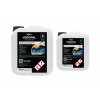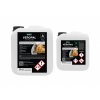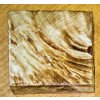EPOXY RESINS
Epoxy resins are mostly two-component liquids that, when mixed together, begin to polymerize and form a hard, chemically resistant and shape-stable casting. This is used in the production of design furniture, especially river epoxy tables, coffee and side tables, resin clocks, resin jewelry, epoxy serving boards, epoxy lamps, epoxy paintings and other decorative products. All epoxy resins can be colored with compatible pigments and dyes depending on the desired effects.
According to application, epoxy casting resins are divided into:
- Casting resins – clear, low-viscosity epoxies for production of epoxy cast tables, doors, headboards, clocks, lamps, jewelry, serving boards, etc.
- Special (effects) resins – developed for special purposes (such as painting and geode art, repeated thin layer casting, high-strength deformed wood repairs, fast, quick product repairs etc.).
- Penetration resins – to seal porous materials (wood) and thus eliminate bubbles when curing the casting resin. Also to create an adhesive bridge for the next layers.
- Coating, table top resin – for top coat casting or overlaying of wooden surfaces (tables, coffee tables, clocks, etc.).
- Stabilizing resins – for strengthening and stabilizing rotten or unpaved parts of wood, and for making stabilized wood for luxury products (knife handles, jewelry, golf club handles, luxury car levers, luxury pens, etc.).
- Floor resins – casting resins for design cast floors and 3D clear floors.
- Laminating Resins – lower viscosity two-component epoxy systems for laminating composite materials, whether by manual lamination, winding, RTM/RIM/SCRIMP or infusion.
Each epoxy resin has its own defined properties and always before casting one should know (look in the technical sheet) what parameters and properties the given resin has and whether it is suitable for the given project. Among the most important parameters that need to be monitored and on which the use of the resin is derived are:
- Food certification – Important if you make tables, tables, bowls, etc., products that come in contact with food.
- UV resistance – Defines the UV resistance of the resin. UV radiation causes degradation = yellowing of each epoxide and this parameter tells us how long and to what shade the resin changes shade. There are epoxies yellowing to a deep yellow color in a few months to epoxies changing their color to a very soft yellowish color in 5-6 years on the market.
- Gelation time – Defines the time it takes for the resin to polymerize enough to increase its density to a honey consistency. Most pigment effects are formed at this time.
- Mixing ratio – This is the calculated ratio of resin (component A) to hardener (component B) that needs to be adhered to as much as possible and the resin should have the correct properties.
- Workability time – The time it takes to work comfortably with the resin.
- Full cure time – The time after which the resin is already cured, the epoxy is fully polymerized and is ready to be machined by grinding, milling, polishing, drilling, turning, etc.
- ShA hardness – Determines how hard or tough the material is after curing, evaluated with SHORE method. The ideal value is between 75-80ShA. Too hard systems are then more fragile and at the same time unable to absorb the internal stresses caused by wood working.
- Maximum casting layer – Maximum layer which can be cast at one time without the risk of an exothermic reaction ("boiling" of the resin).
- Maximum casting volume – Maximum volume of resin that can be mixed and cast at one time without the risk of an exothermic resin reaction ("boiling").
- Glass transition temperature – Determines the temperature resistance of the epoxy. This is the temperature at which the polymer changes from a hard glassy state to a flexible rubbery state. The process is reversible, ie when the temperature is reduced, the polymer hardens again.
- Epoxy shrinkage – Defines the epoxy volume loss during curing. It is manifested by a decrease in the casting level during curing and micro-waves on the surface of the cured casting.
- Epoxy viscosity in mPa.s – Shows how fluid the resin is. Casting resins tend to have lower viscosity, while resins for various effects have higher viscosity.
Depending on the size and type of casting, the types of resin therefore differ from and are divided into:
-
Casting resins for small castings – Such as jewelry, pens, small decorations, coasters, etc. This type of resin tends to be thin, fast to cure (on the order of hours up to 1 day), clear, harder and more fragile.
-
Casting resins for medium castings – Such as epoxy serving boards, small pieces of furniture, epoxy lamps, epoxy clocks, medium coffee tables made of epoxy resin and wood, etc. This type of resin tends to be thin, slower in curing (2-3 days), however, layers up to eg. 5 cm can be cast with them, they are usually clear, hard.
-
Casting resins for large castings – Such as resin and wood dining tables called river tables, coffee tables, doors, headboards, epoxy vases, larger pieces of furniture, etc. These epoxy resins tend to be sparse, slow to cure (3-5 days), they can cast larger volumes (up to eg. 50 L), and higher layers (eg. 10-12 cm).
-
Table top resin – For creating of a "glass" surface on wood and resin castings. This type of clear resin is thin, relatively fast to cure, with good flow, minimal shrinkage and good surface resistance.
-
Artistic casting resins – For creating epoxy images, geode art, various effects, etc. Resins of this type are thick, relatively fast to cure, clear, with minimal shrinkage.
-
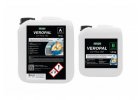 CLEAR CASTING RESINS
CLEAR CASTING RESINS
-
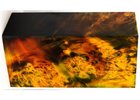 WOOD STABILIZATION RESINS
WOOD STABILIZATION RESINS
-
 SPECIAL RESINS
SPECIAL RESINS
-
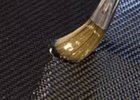 LAMINATION RESINS
LAMINATION RESINS
-
 WOOD PENETRATION
WOOD PENETRATION
-
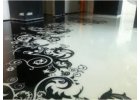 FLOOR RESINS
FLOOR RESINS
Bestsellers
3 items total
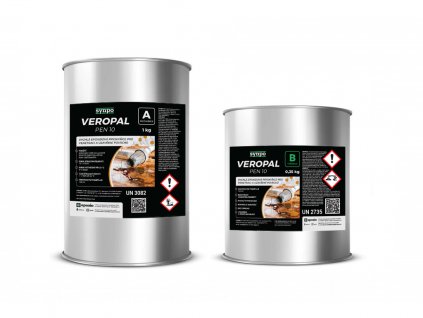
NAŠE ZNAČKA - VYROBENO V ČR
€13,67 excl. VAT
€16,54
/ pcs
Veropal PEN 10 is a fast epoxy penetration suitable for closing wood pores and eliminating bubbles when casting from epoxy resin. Mixing ratio 100:35, curing within 5...


